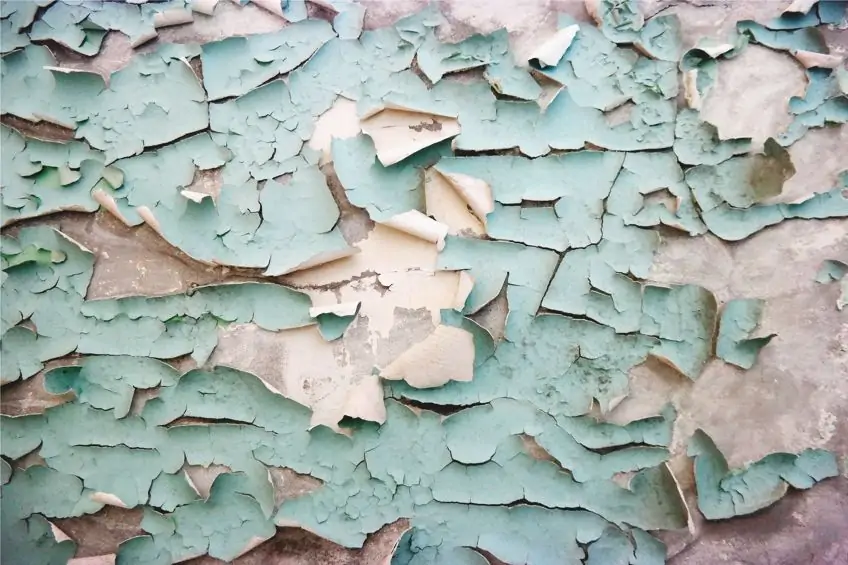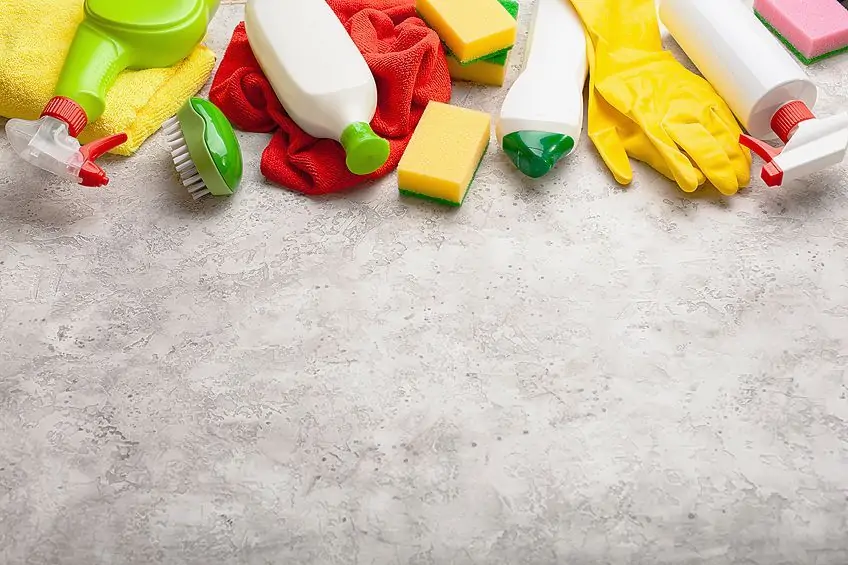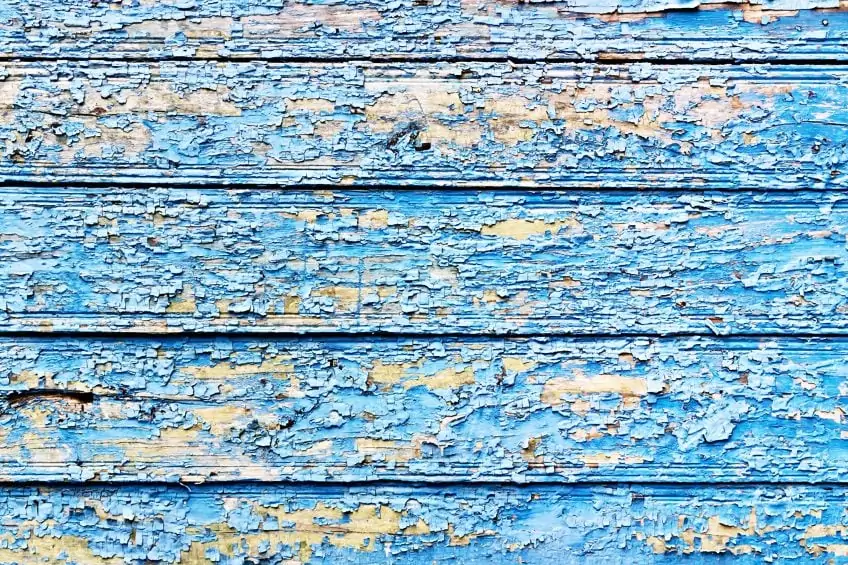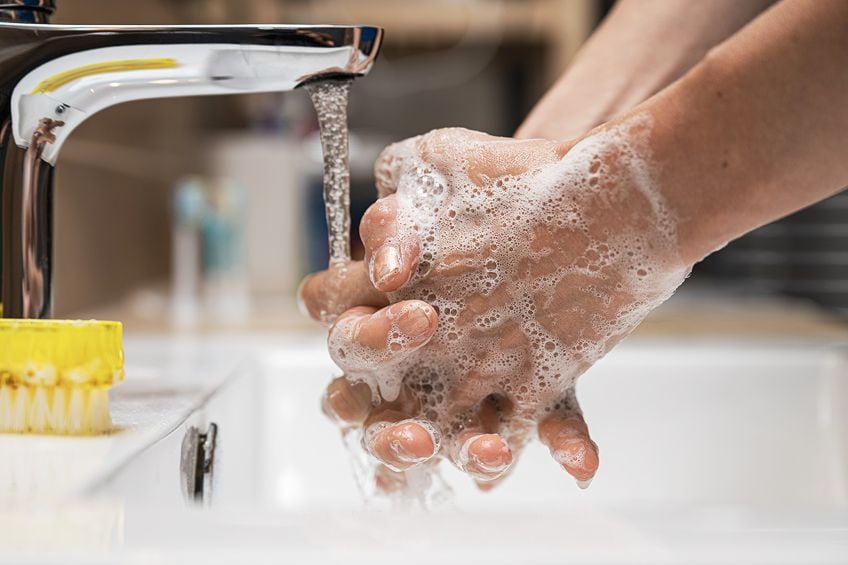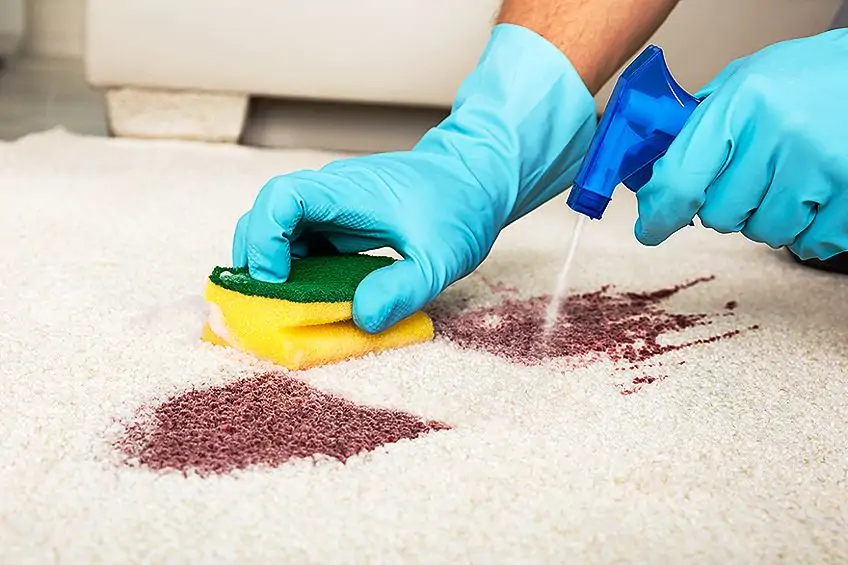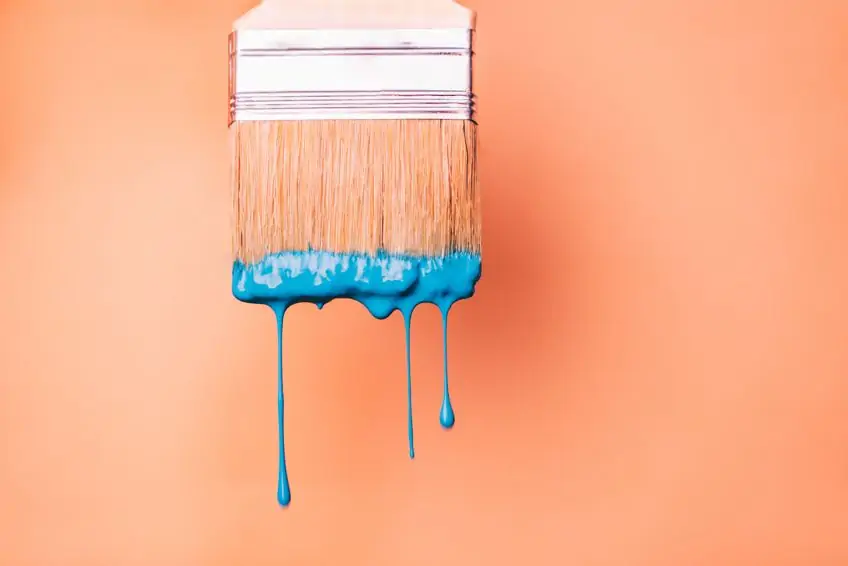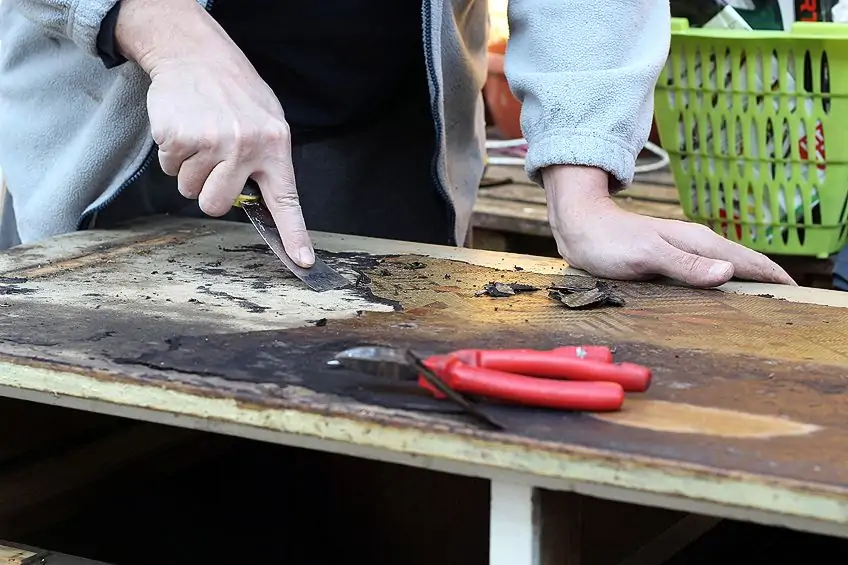How to Remove Latex Paint – The Best Methods for Cleaning Latex Paint
This post may contain affiliate links. We may earn a small commission from purchases made through them, at no additional cost to you. You help to support resin-expert.com
Latex paints and craft acrylic paints are somewhat alike, as they are water-based. However, latex paint comes in much larger quantities and is commonly used to paint larger surfaces like walls or ceilings. Latex paint is easy to work with, dries quickly, and comes in a variety of finishes. You also have latex formulas that contain enamel or paints like acrylic latex, which makes it more durable, less porous, so you can use these paints on outdoor surfaces. Sometimes, you might want to re-do a latex-painted surface or maybe you have messed paint all over your wood furniture or carpet. This is where knowing how to remove latex paint comes in handy. Let us take a look at the various methods of latex paint removal.
Table of Contents
Methods for Latex Paint Removal
When it comes to latex paint removal, it all depends on what you need and what you prefer to use. You can either go straight for the harsh latex paint stripper or maybe you prefer the more eco-friendly options. When it comes to the more durable paints, a heavy-duty solution might be the only answer.
The choice comes down to how old the paint is, the type of paint, how many layers there are, and how much paint do you need to remove. Latex paint strippers and other paint strippers might not work on all surfaces, so always read the product directions, and understand what you need for the job before you begin. Now, let us take a closer look at how to remove latex paint.
Since latex paint is used mainly for interior walls and ceilings, we will start here. Maybe you have bought a new house and want to repaint the walls? In many cases, you can easily paint over the old paint. However, if the wall has multiple players of paint already, or you notice the paint is beginning to peel and crack, it might be a good idea to remove the old paint altogether. This also goes for furniture pieces that have been painted with latex paint. Some of the methods for cleaning latex paint include the following.
Solvent Latex Paint Stripper
Unlike caustic paint strippers, solvent strippers will not damage the surface. The solvents work quite quickly and are fairly easy to use. However, solvents do give off toxic fumes that can be a health risk. Some solvent products may even contain carcinogenic substances, so it is wise to work extremely carefully with them. Make sure to wear protective goggles, gloves, a mask, and to work in an area where there is plenty of air circulation. Solvents should also never be used around any kind of heat source.
Latex Paint Remover Tools
This method incorporates various tools to physically remove the paint. Some of these methods include scrub brushes, sandpaper, stripping pads, paint scrapers, and abrasive blasting (sandblasting). These tools essentially scrape the paint away. You could also use electric tools with brush or sandpaper accessories to do the job faster than by hand. These methods are safer as there are no toxic chemicals involved. On the other hand, using these tools is hard work and you can easily damage the plaster walls or drywall. Older houses also used paint that contained lead, which is toxic if you breathe it in.
So, these methods are not recommended if the walls have lead paint. If you do follow this method, always wear protective eyewear and a mask, to prevent the dust from entering your lungs and eyes.
Heating Things Up
Heat can be used to strip the paint off the walls; the paint softens and makes it easier to scrape off. Make sure you use a heat gun or other electric element tool and not anything with an open flame. This is a fire hazard, even the electric heating tools need to be used with caution. When applying the heat, make sure you keep moving the tool around the surface for good results. Working with any heated tool can be dangerous and cause burns, so work carefully.
Caustic Latex Paint Stripper
These are extremely alkaline substances, for example, sodium hydroxide. The caustic latex paint stripper breaks down the paint bonds, which then makes it much easier to scrape the paint off. You should use these paint strippers with caution as they can cause chemical burns and other health issues. So, wearing protective gear and working in a ventilated space is important.
Also, if the paint stripper is left on the surface for longer than necessary, the chemicals can eat through the paint and damage the substrate below. You will also have to use a mild acid wash once you have finished using the stripper. A straightforward combination of water and vinegar will do the job. This helps to neutralize the surface and inhibits further damage. Caustic latex paint strippers are best used for thicker layers of paint, on detailed surfaces, doors, and furniture.
Vinegar
Vinegar is extremely useful and can be used in many different ways around the house including adding flavor to your foods. This is also a cheap and non-toxic way to remove paint. Place some vinegar into a saucepan and heat it on the stove. You can also heat in the microwave, it should not be boiling, only warmed up.
Once it has heated up, remove, and dip a brush or sponge into the vinegar and apply to the surface of your painted area. Let this sit for around 15 minutes, then look to see if the paint has lifted. If not, apply some more and wait a little longer. Once the paint begins to lift, scrape it off with a scraper and wipe the area down with a cloth.
Less-Toxic Latex Paint Strippers
Thankfully, today you can get paint strippers that are less toxic to both the environment and your health. The first choice is the soy-based gel paint stripper, which is obtained from soybean oil. This makes it more eco-friendly; it has a low volatile organic compound (VOC) and is also not as flammable as your conventional strippers. You can use the soy-based stripper safely on metal, concrete, and wood. To some, it might be an inconvenience as it takes much longer to loosen the paint.
You should apply the stripper with a paintbrush and then leave the covered area for at least several hours or longer. Since it has a gel consistency, it should not drip or evaporate over that time.
The second option is the citrus-based latex paint remover, which contains organic compounds that have been obtained from citrus plants. The paint strippers have a citrus smell and are safe to use on varnished and painted surfaces. As with the soy-based strippers, the citrus-based variety also takes longer to work. Even though these are biodegradable, any disposal thereof should be done properly and not just thrown down the drain or in the garden.
Cleaning Latex Paint With Household Ingredients
You can also choose to try a few do-it-yourself paint stripping methods. If these do not work, you can always move onto a method that is a bit more effective. Also, these might only be good for smaller areas, tools, or splatters of paints.
Sodium Hydroxide
Also known as lye, it might not be something you have around the house, but it is easy to find at a hardware or craft store. Lye should be handled with care as it could burn the skin, so it is best to wear gloves that are chemical resistant. Fill a fairly big bucket with two gallons of water. Take one cup of lye and one cup of cornstarch and add this to the water. Stir the mixture with a wooden stick leave for a few minutes. Then apply to your painted surface and leave for five minutes. Using a scraper, lift the paint off. Clean the area with a water and vinegar mixture, then wipe with water.
Baking Soda
This is an ingredient that is quite useful around the house. This is an effective approach you can use to try and remove paint from metal hardware. The metal pieces should be able to fit into a pot. Place some water in a pot, making sure you do not use this particular pot for cooking. Bring the water to a boil and then add about 60 ml of baking soda without stirring it.
Put your metal pieces inside the pot, being careful not to burn yourself. Let everything simmer for about 20 minutes, remove, and let it cool a little before scrubbing with a toothbrush.
Liquid laundry detergent is another method for things like metal doorknobs or those electric switch plates. You do not bring the water to a boil in this case, simply place water into a bowl with two tablespoons of detergent. Place the metal items in the bowl and to get rid of the paint, you can scrub with a brush.
Washing Soda and Flour
Take some washing soda and mix into some cold water, using equal amounts. Next, separately make a paste with two-thirds of a cup flour and warm water. Then combine both mixtures and apply this to your painted area with a brush. Leave the mixture to sit for about an hour, keeping it moist by spraying it with water every so often. Combine some vinegar and warm water, then wipe the flour paste off.
How to Remove Latex Paint from Wood
There are all kinds of surfaces you can paint; however, wood is one of the more common surfaces. Other surfaces include metal, concrete, brick, and more. Paint can also get on surfaces you are not painting, but while painting walls, it can easily splash onto your wood floor or furniture. The easiest way to prevent this is to cover the surfaces you do not want paint on to avoid any further clean-up hassles.
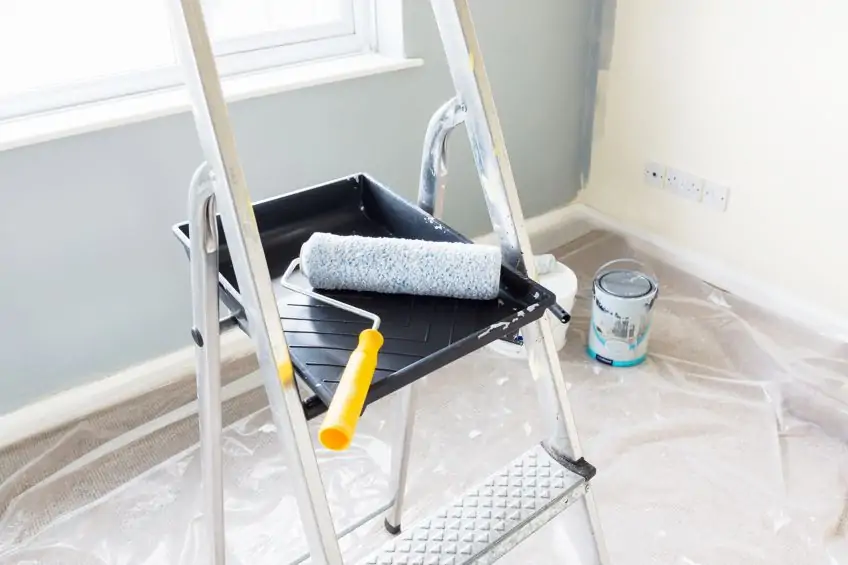
How to Remove Latex Paint from Smooth Wood
First, you can try sanding the paint away. Larger areas can be done with an orbital sander. Wearing a mask is vital and you can vacuum the dust-up as you go. The next option is to use the chemical strippers, there are safer options available with lower toxic levels. However, you should still use protective gear when working with these types of strippers. Always follow the product directions when using any chemical strippers. Apply the paint stripper and wait for about 20 minutes.
Take a paint scraper and gently work the latex paint off the surface without damaging the wood. If some paint remains, you can follow the same process again.
You can also try using a heat gun to remove the latex paint. Hold the heat gun correctly and do not position it too close, otherwise, you run the risk of marking the wood. Holding the heat gun about 8 to 10 inches from the surface should be good and move slowly and in a circular motion so as not to stay in one place for too long. You should notice the paint bubbling or wrinkling, at which time, you can take a paint scraper to gently lift the paint off.
A slightly safer method is to use a steam stripper; however, this will take quite a bit longer than any of the other methods. You will need to hold the steamer quite close to the painted surface and hold it in place for about 20 seconds. You should notice the paint starting to bubble, and you can then begin to scrape it off. Only smaller sections can be done each time, so larger areas will take up some time.
Safety Guidelines when Using Latex Paint Remover
When working with paint, solvents, and other chemicals, it is best to follow all the safety guidelines. However, before you even start, you should take note of the type of paint that was used. Many older houses used paint that contained lead, which is extremely toxic. You can easily check with a lead test kit before starting to remove any paint. Below are further safety measures you should consider.
- Wear a respirator mask
- Protective eyewear or goggles
- Nitrile or latex gloves
- Wear old clothes or even a long sleeve paint suite
- Work in an area that has plenty of air circulation
Removing Latex Paint Stains
When painting, maybe you get some paint on your clothes, or the carpet or your hands. You do not want to use any harsh chemicals that may damage fibers or use something toxic that is absorbed through the skin. There are safer ways to deal with removing paint.
Removing Latex Paint from your Skin
The easiest and safest way to remove latex paint from your skin or hair is to simply use hot water. Run yourself a nice hot bath, soak for a bit and then scrub off the paint using some soap. You can also simply use a small bowl with hot water and some soap for your hands. The best way is to not get the paint on your skin in the first place, but sometimes that is extremely difficult unless you cover every inch of your body.
When it comes to smaller, more stubborn paint, you can try dabbing a little rubbing alcohol with some cotton balls.
Removing Latex from Carpets
When there is a really bad paint spill on carpets or the paint has set into the fibers, you may want to get in some professional carpet cleaners to do the job. Paint can get into the fibers, and this makes it difficult to remove. However, if it is only a small spill, you can try the following.
Mix some warm water and liquid detergent in a bowl and take a dampened cloth and dab onto the paint. Do not rub into the carpet, this will just spread the paint. Take another dry clean cloth or sponge and dab the area to absorb all the moisture and paint. Leave this to dry. You can follow the same process twice if all the paint does not come off at once. Some other methods include:
- Acetone
- Lacquer thinner
- Goof-off
Removing Latex Paint from Clothes
A painting suite might be more for the professionals, but when painting, you can also wear old clothes. However, sometimes you can get paint onto your good clothes without meaning to. In this case, you should try to clean the area straight away. If the paint has not dried, you can wash it with some water which should clean the paint off without problems.
When it comes to more stubborn paint stains, you can include some acetone. First, dampen a cloth with some warm water and dab the paint. Then take some acetone and saturate the area of clothing with the paint stain. Rub the area against itself and then use a brush to further help remove the paint. You can add a little more rubbing alcohol at this stage if you wish.
Rinse out the area with warm water and then place the clothing item into the washer, making sure it is a warm wash.
After rinsing the area under some warm water to remove the paint, you can also try using a mixture of equal parts liquid detergent and water. Take a sponge and dip into the mixture and then apply to the paint, then work up a nice lather. Rinse and then place in a warm wash. You can also try the following:
- Hairspray
- Try hand sanitizer
- Paint thinner
- Rubbing alcohol
- Goo Gone or Goof Off
- Duct tape over dry paint
- A scraping implement
Our Top Tips for Cleaning Latex Paint
Sometimes you can use the best latex paint remover and still find yourself struggling with removing all the paint. There are also some recommendations you should follow, to get the best outcome when using paint strippers.
- For optimal results when using a commercial paint stripper, always read the product instructions.
- To protect your skin and eyes from potentially toxic chemicals, wear protective clothing and gear.
- If you want to protect yourself and the environment, rather choose the more non-toxic paint remover products.
- After you have applied the latex paint remover, you can use a scraper or steel wool to remove the paint.
- For the best results, do not use the paint remover sparingly. The more remover you use, the easier and quicker your latex paint removal will be.
- Protect surrounding areas when using paint strippers, even outside. Cover nearby plants and flowers.
- When using non-toxic latex paint strippers, be patient as they will require a little more hard work but will still provide good results.
Although latex paint may initially seem tricky to remove, there are several effective ways to get the job done. With the information in this article, you have everything you need to successfully remove latex paint and latex paint stains from a wide range of surfaces.
Frequently Asked Questions
How to Remove Wet Latex Paint?
The best thing you can do to remove latex paint if you make a mess is to clean up straight away. A paint scraper can help to lift off any extra paint. Then, you can first try using a mixture of hot water and liquid soap. For example, one cup of water to half a teaspoon of soap. Preferably use a spray bottle to apply the mixture or try dabbing it on with a dampened cloth. If it is a larger flat area, you can use a wet and dry vacuum cleaner to go over the area. You can also use some denatured alcohol on a cloth over the area, then wipe with clean water and let dry.
Can you use Rubbing Alcohol to Strip off Latex Paint?
Yes, rubbing alcohol can be used to remove latex paint. You can use some cotton balls dipped in some rubbing alcohol, then dab onto your mirror, window, or even your clothes where the paint is and wipe off.
Can you use Goo Gone on Latex Paint?
Yes, you can. Dab some Goo Gone on top of the paint and clean with a cloth. Goo Gone even has a latex paint clean-up product for just this purpose. Simply spray onto wet or dry latex paint to remove it.
Can Acetone Remove Latex Paint?
Acetone can help clean up latex paint and can be used on most surfaces. However, it is a good idea to apply a little to a small separate area before using. Apply the acetone, and then remove with a cloth. You might have to repeat the process, if necessary.
How to Remove Paint From Glass?
The easiest method without using any solvents is to scrape it off using a blade. To avoid scratching the glass surface, first, apply a little lubricant such as Windex. Lift the paint with the blade and then wipe clean. However, if the paint is being stubborn, you can try using acetone, or mineral spirits.



